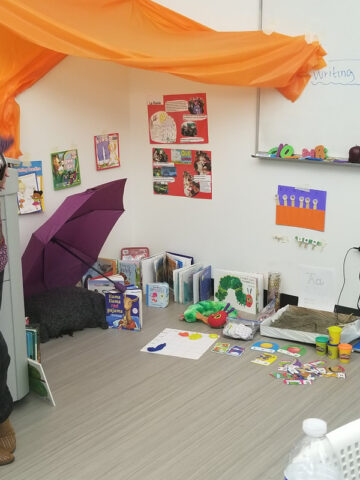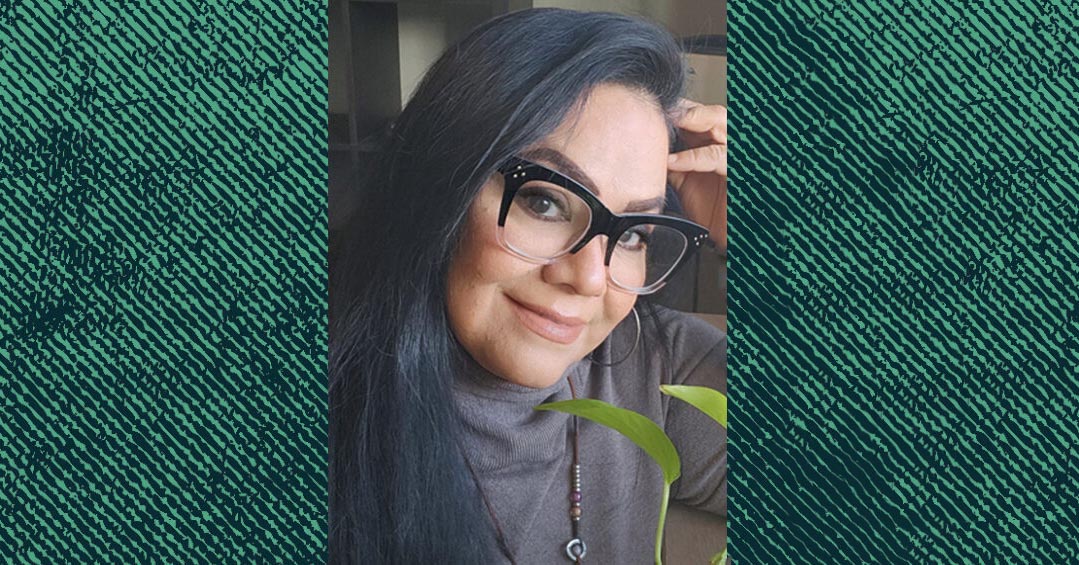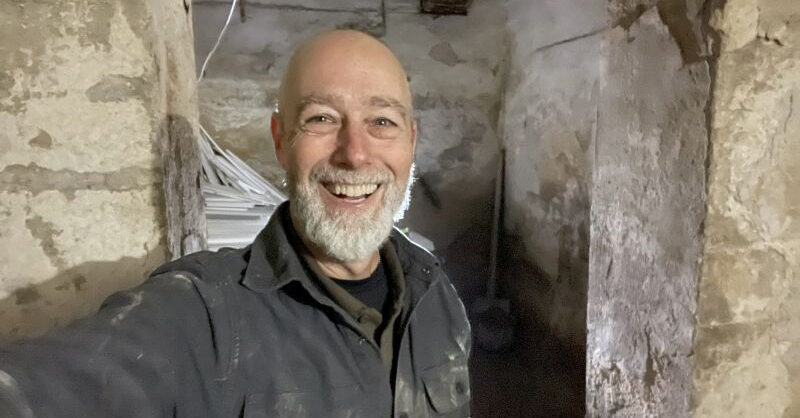Samantha Carrillo is someone who really is embracing bilingual education not just in her work but across her life. When she was studying at Goddard for her MFA in Interdisciplinary Arts, she took particular inspiration from a quote from the American scholar of Chicana feminism, Gloria Anzaldúa, which she included in her master’s thesis:
Hasta que no sea libre de escribir bilingüemente y de cambiar de código sin tener que traducir siempre, mientras no tenga que hablar inglés o español cuando preferiría hablar spanglish, y mientras tenga que acomodar a los angloparlantes en lugar de que ellos me acomoden a mí, mi lengua será ilegítima.
Here is my translation of the quote into English:
Until I am free to write bilingually and switch codes without having to translate, as long as I don’t have to speak English or Spanish when I would prefer to speak in Spanglish, and for as long as I have to accommodate English speakers instead of being accommodated by them, my language will be illegitimate.
The standard model of a teacher education curriculum has the student teachers absorbing lectures, moving through different subjects, preparing their own lesson plans, and eventually heading out for placements in real-life classrooms. Unfortunately, says Samantha Carrillo, a faculty member in Antioch’s School of Undergraduate Studies, the way teachers are taught often is replicated in their K-12 classrooms. Her solution to this problem is to be responsive to the lived experiences of her students from the beginning—and in some ways, to let them lead the course from the very start.

This idea underpins the certificate that Carrillo and her colleague Sharon Cronin run at Antioch’s Seattle campus: the Certificate in Culturally Responsive Early Childhood Education, or CRECE. This unique program is a six-month online course taught bilingually. For the spring of 2024, it will change to nine months. This will benefit students as they will have access to scholarships and student support from the state, and the number of credits will increase.
Educators who enroll leave with a more robust knowledge of culturally responsive pedagogy and how to foster culturally sensitive classrooms in Early Childhood education. Carrillo also explains, “Most of the teachers getting the CRECE certification are educators who often don’t have a BA degree, or do not have a BA in this country. In many cases, they have academic degrees in their countries of origin.”
The word CRECE in Spanish means grows, a fitting verb to describe the nurturing learning that unfolds through this program, where students are encouraged to reflect on their experiences and identities, where culture and customs become the grounds for a deeper exploration into Early Childhood Education, and where student educators bridge the gap between their teaching experience and formal education in this country.
In one of Samantha Carrillo’s classes, students assume the role of teacher. It is by contextualizing a lesson like “Introduction to Culturally Relevant Anti-Bias Education” within the lived experiences of the students in the classroom that the course acquires its cultural responsiveness. These dialogues are accompanied by processes of reflection and introspection, which is a way to ground the pedagogical material students are learning in the personal and particular rather than the theoretical. Carrillo says, “We don’t teach them. They teach us—they teach us how they practice their cultures in their environments and how they honor other cultures in their environments. We provide them with feedback and resources, but mostly, this certification focuses on their experiences in education.”

CRECE’s dynamic program draws upon various mediums to explore how educators can cultivate culturally responsive classrooms in Early Childhood education. From writing exercises to sculpting with clay, these different mediums are conduits that connect the classroom to formative experiences. “One of my favorite activities,” Carrillo explains, “is asking students to bring clay or playdough.” She invites students to sculpt their first memory of encountering art in its broadest definition. “It is a beautiful and amazing experience where people who are coming from all over begin to recount memories that take them back to their childhood and to specific details about family and context, and in that process, they start to validate themselves and their past,” Carrillo says.
Drawing purple palm trees is Carrillo’s first memory of art, connecting her to Puerto Rico, where she was born, and Mexico, where she grew up. As a child in Mexico, she would draw and paint iterations of purple palm trees that family members dismissed as something fabricated by a child’s imagination. But Carrillo explains that as a child, she vividly remembers dusk in Puerto Rico when the sky turned purple and “the palm trees became purple as if they were absorbing the color of the sky. Children are so perceptive,” says Carillo. CRECE works to draw forth formative memories and emotions to validate the endless ways in which individuals are different. “Recognizing that we are all different and honoring those differences in the classroom is at the core of Culturally Responsive education because we are a community where everybody has a place and a voice,” Carrillo explains.
Carrillo stresses that Culturally Responsive Education in Early Childhood turns away from pedagogical models of assimilation that strive for sameness. Rather than a standardized education model, Carrillo explains that Culturally Responsive classrooms “are structured around the idea that I will include you. I will ask you to share more about what makes you you. Bring us your culture. Share your culture. Here, we validate it. Here, we integrate it. Here, we are going to use it. That’s how we perceive differences in this certification.”
Carrillo was working as a principal at an elementary school in Morelia, Michoacan, Mexico, when she began to feel burnout. An assiduous learner, Carrillo had completed two BAs, a master’s in education, and a career teaching in different schools in various capacities. Carrillo decided to take a sabbatical year, leave Mexico, and head north to Vancouver, Canada, where close friends lived. “I love Vancouver,” Carrillo says, “It is such a multicultural city, so many people from so many different countries and cultures.” Living in Vancouver, Carrillo realized that though Mexico has rich customs and traditions that vary from region to region, she hadn’t really ever lived in a multicultural city.

Drawn to the exchange of differences, Carrillo decided to uproot her life from Morelia and move to Seattle, figuring it was close enough to Vancouver, and as a US American citizen, it would be easier to relocate to the U.S. than Canada. As soon as she arrived in Seattle, Carrillo said, “I’m going to study something because I love to study.” It was amidst getting another BA in early childhood education at Goddard University that Carrillo met Dr. Sharon Cronin while enrolled in a dual language program. As someone who grew up speaking English and Spanish, she couldn’t stop thinking about working in some capacity for a program that encouraged bilingual teaching and learning. Carrillo began volunteering as a writing coach at CRECE a semester after the program launched. She has been there ever since but is now a lead instructor.
CRECE is in its fifth year, and COVID-19 extended its reach as the program transitioned into a fully online certification. Carrillo says, “It’s just so cool because it means teachers from different states and even countries can participate and bring this knowledge into their respective communities, and it doesn’t just stay localized in the Seattle area.” Carrillo also stresses that CRECE’s dual language approach is another example of how a commitment to linguistic and cultural democracy is at the core of this program.
CRECE courses alternate between being taught in Spanish and English and other native languages such as Mandarin, Somali, and Tagalog, among others. What is so unique to this program is the team of translators that ensure content is being translated from English to Spanish and Spanish to English. Carrillo explains, “Students can receive information in their dominant language while exploring a secondary language in a friendly way.” This flexibility enables students to choose their degree of immersion, transforming the classroom into a language-rich environment where students can adjust the degree to which they move between English and Spanish with regard to listening, speaking, and writing.
Carrillo views her commitment to lifelong learning as a commitment to community building. As a Latina woman, she sees her presence in the spaces she has navigated through work and study as creating opportunities for others who might not have envisioned a similar career path. Carrillo says, “Those of us with the chance to pursue formal education are better positioned to carve out space and open doors for individuals within our communities. It’s not merely about continuing in school because I love learning, but my presence here demonstrates to others that they can navigate similar paths.”
Drawing inspiration from the influential teachings of Gloria Anzaldúa and Paolo Freire, Carrillo emphasizes, “If you have knowledge and that knowledge doesn’t translate into action for you and your community, then it’s dead knowledge.” Carrillo is about to embark on a new journey as she begins a PhD in education at Antioch University. For her, delving into fresh communities and experiences through education aligns with a favorite Spanish quote she loosely translates as “I don’t put out fires. I agitate/light flames.” This ethos encapsulates Carillo’s belief in not merely addressing immediate challenges in education but actively sparking change that fosters growth grounded in difference.




